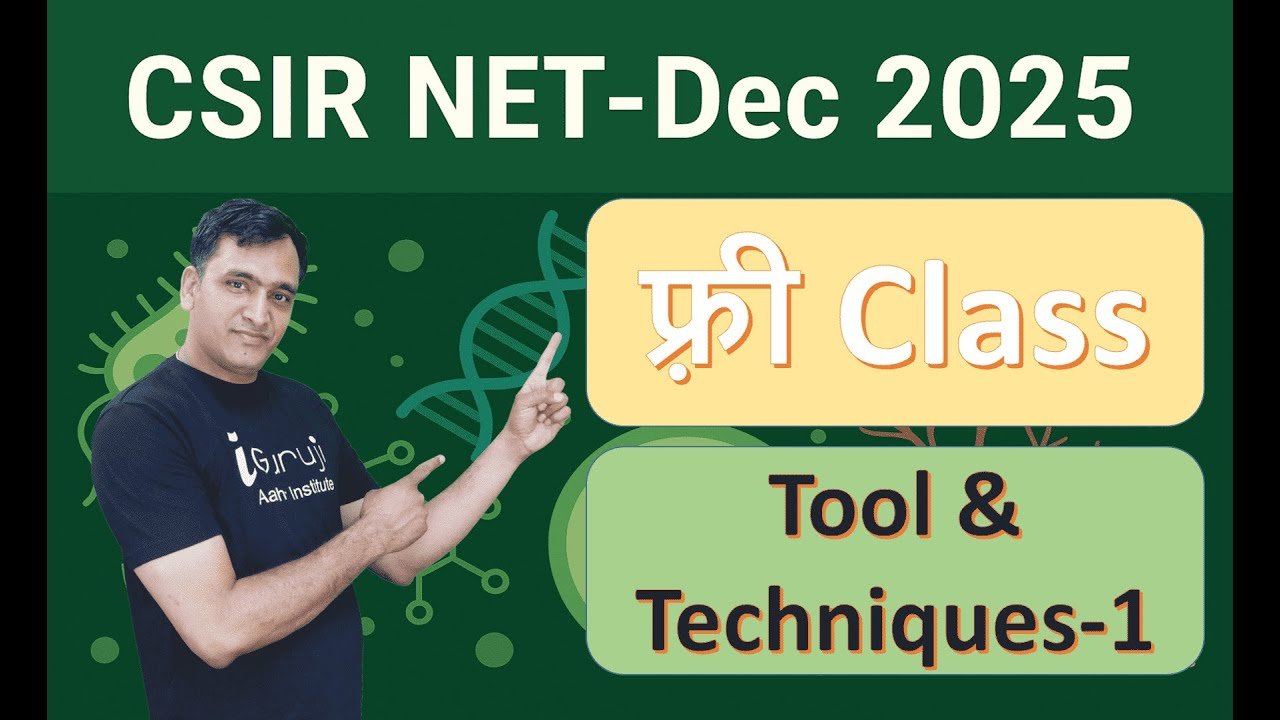
Tool & Techniques || Concepts & Facts – A Complete Overview for Life Sciences Aspirants
Understanding Tools & Techniques is vital in biology, biotechnology, and life sciences education. Whether you’re preparing for exams like IIT JAM, GATE, CSIR-NET, or university-level tests, mastering the concepts and facts under this topic gives you an edge. In this blog, we present an easy-to-understand breakdown of essential tools, core techniques, and exam-oriented facts that every aspirant should know.
🧬 What Are Tools and Techniques in Biology?
Tools and techniques refer to the experimental methods and instruments used to study cells, molecules, tissues, DNA, proteins, and other biological materials. They form the backbone of modern biology and biotechnology research.
These tools are used for:
-
Isolation and purification of biomolecules
-
Analyzing genetic material
-
Studying cellular structures
-
Visualizing molecules
-
Performing diagnostics
🔍 Core Concepts You Must Understand
1. Microscopy
-
Light Microscope: Uses visible light; suitable for observing live cells.
-
Electron Microscope (TEM & SEM): Offers high resolution using electron beams.
-
Fluorescence Microscope: Visualizes specific proteins/DNA with fluorescent dyes.
Fact: Electron microscopes can magnify up to 2 million times!
2. Centrifugation
-
Separates components based on density using high-speed spinning.
-
Types: Differential, density gradient, ultracentrifugation.
Used for: Isolating organelles like nuclei, mitochondria, or DNA pellets.
3. Chromatography
-
Separation based on molecular properties.
-
Types: Paper, thin-layer (TLC), column, ion-exchange, gel-filtration, HPLC.
Fact: HPLC is widely used in drug analysis and protein purification.
4. Electrophoresis
-
Technique for separating charged biomolecules (like DNA, RNA, proteins).
-
Gel types: Agarose (for DNA/RNA) and Polyacrylamide (for proteins).
SDS-PAGE: Common for analyzing protein molecular weight.
5. Spectrophotometry
-
Measures light absorption to quantify biomolecules.
-
UV-Vis spectrophotometer: Detects nucleic acids and proteins at specific wavelengths (260 nm and 280 nm).
6. Molecular Techniques
-
PCR (Polymerase Chain Reaction): Amplifies DNA fragments.
-
RT-PCR & qPCR: Used for gene expression studies and viral detection (e.g., COVID-19 testing).
-
Southern/Northern/Western Blotting: Detection of DNA, RNA, and proteins respectively.
📊 Important Facts for Exams
| Technique | Key Application | Common MCQ Fact |
|---|---|---|
| PCR | DNA amplification | Invented by Kary Mullis (1983) |
| Western Blot | Protein detection | Uses antibodies |
| ELISA | Diagnostics (e.g., HIV) | Based on antigen–antibody reaction |
| Spectrophotometry | Biomolecule quantification | DNA absorbs at 260 nm |
| Centrifugation | Cell fractionation | Higher speed = smaller particle separation |
📘 Tips for Preparation
-
Understand the principle behind each technique.
-
Memorize unit conversions (e.g., nm, µg, rpm).
-
Solve PYQs: Techniques are frequently asked in IIT JAM, CSIR-NET, DBT-JRF, etc.
-
Use diagrams to remember steps, apparatus, and outcomes.
🧪 Quick Mnemonic to Remember Techniques
“Can Cool Elephants Play Spectacular Molecular Games?”
(Centrifugation, Chromatography, Electrophoresis, PCR, Spectrophotometry, Molecular biology, Gel-based methods)
✅ Conclusion
The topic Tool & Techniques || Concepts & Facts is both conceptual and factual — and highly scoring if prepared well. Whether it’s a question on SDS-PAGE, PCR, or spectrophotometry, having clarity on core principles and practical facts will help you excel in exams and labs alike.
